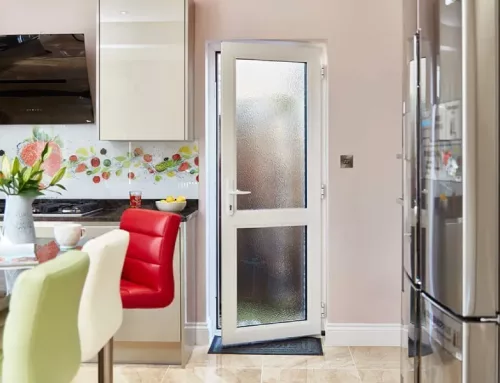Soundproofing with uPVC Doors and Windows: Enjoying a Quiet and Peaceful Environment
In today’s bustling world, finding tranquility and enjoying a quiet living space is highly valued. Excessive noise from traffic, neighbors, or other external sources can disrupt our peace and affect our well-being. uPVC (unplasticized polyvinyl chloride) doors and windows offer an excellent solution for soundproofing, creating a serene and peaceful environment within our homes. In this article, we will explore how uPVC doors and windows contribute to soundproofing, allowing homeowners to enjoy a quiet and peaceful living space.
1. Multi-Chambered Design:
uPVC doors and windows feature a multi-chambered design, which helps to minimize sound transmission. The multiple chambers within the uPVC profiles act as an effective barrier against noise, reducing the transfer of sound waves from the outside to the inside of the house. This design significantly improves sound insulation properties, creating a quieter environment for homeowners.
2. Double or Triple Glazing:
The use of double or triple glazing in uPVC doors and windows is a key factor in soundproofing. These glazing options consist of two or three glass panes with an insulating layer of air or gas in between. The additional layers of glass and insulating material act as sound barriers, reducing noise infiltration. The combination of uPVC profiles and double or triple glazing ensures a higher level of sound insulation compared to traditional single-glazed windows, allowing homeowners to enjoy a quieter indoor environment.
3. Weather Seals:
Properly installed and maintained weather seals play a crucial role in soundproofing uPVC doors and windows. The weather seals create an airtight seal between the window frame and sash, minimizing sound leakage. These seals not only provide energy efficiency benefits but also contribute to reducing noise transmission. Regularly inspecting and replacing worn-out or damaged weather seals is essential to maintain their effectiveness in soundproofing.
4. Thickness and Quality of Glass:
The thickness and quality of glass used in uPVC doors and windows also affect their soundproofing capabilities. Thicker glass panels have better sound insulation properties compared to thinner ones, as they absorb and block more sound waves. Additionally, choosing laminated glass for uPVC windows provides an extra layer of soundproofing. Laminated glass consists of two or more layers of glass with an interlayer of PVB (polyvinyl butyral) or EVA (ethylene-vinyl acetate), which absorbs sound vibrations and reduces noise transmission.
5. Reduction of Noise Vibration:
In addition to the design and materials used, uPVC doors and windows help reduce noise vibration. The rigidity and structural strength of uPVC profiles minimize vibrations caused by external noise, preventing them from traveling through the frames and into the home. This feature ensures a more peaceful and undisturbed living environment.
6. Combination with Soundproofing Materials:
For areas with higher levels of noise pollution, additional soundproofing measures can be combined with uPVC doors and windows for optimal results. Acoustic insulation materials, such as soundproof curtains, blinds, or acoustic panels, can be installed to further enhance soundproofing. These materials absorb and dampen sound waves, reducing echo and reverberation within the room.
Conclusion:
uPVC doors and windows provide an effective solution for soundproofing, allowing homeowners to create a quiet and peaceful living environment. The multi-chambered design, double or triple glazing, properly installed weather seals, and the use of high-quality glass contribute to the superior sound insulation properties of uPVC. By minimizing noise transmission from the outside, uPVC doors and windows help create a serene and tranquil home, enhancing comfort and overall well-being. Whether in busy urban areas or near noisy environments, homeowners can rely on uPVC doors and windows to enjoy a quiet sanctuary and escape the disturbances of the outside world.



